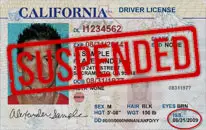It wasn’t until 1998 that a nationwide limit for blood-alcohol content was even suggested. President Bill Clinton suggested the limit in order to combat the problem of drunken driving. However, it wasn’t until 2001 that a Department of Transportation federal appropriations bill said it would cut funding to states who did not establish this limit. As a result of this bill, all fifty states and the District of Columbia established the .08% blood-alcohol threshold to determine alcohol intoxication. As of January 1st, 2019, Utah lowered their BAC to .05%, becoming the state with the lowest BAC limit in the country. Now, according to the Los Angeles Daily News, a Los Angeles lawmaker looks to lower the limit from .08% to .05% in California.
Assemblywoman Autumn Burke, a Democrat from Marina del Ray introduced AB 1713, which would lower the drunk driving threshold from .08% to .05%.
The proposed law is named Liam’s Law in honor of a 15-month-old boy that was struck and killed by a drunk driver as his mother pushed him in a stroller across Hawthorne Street.
The National Transportation Safety Board advocates for a limit of .05%. The organization estimates that lowering the threshold to .05% will save 1,500 lives per year.
Utah became the first state to adopt the lower blood-alcohol limit to .05%, but similar proposals are being introduced in New York and Oregon.
One possible roadblock to passing this bill is the fact that California is loathe to promote a bill that would result in more people in jails. A first time DUI has a potential sentence of a minimum of 48 hours in jail.
Another possible detraction from the proposed legislation is that instead of targeting repeat drunk drivers, it would instead adversely affect those who drink moderately or only socially.
Debate on the bill will begin in March.



